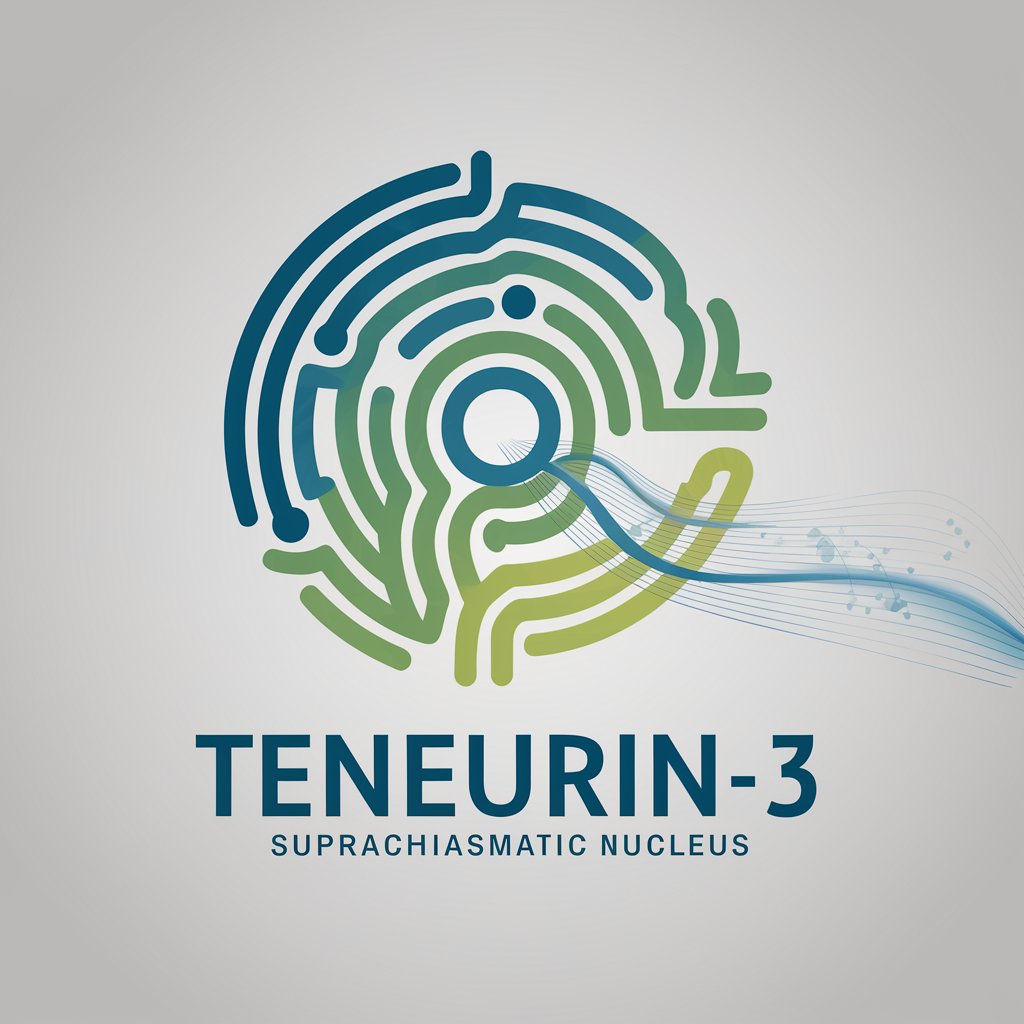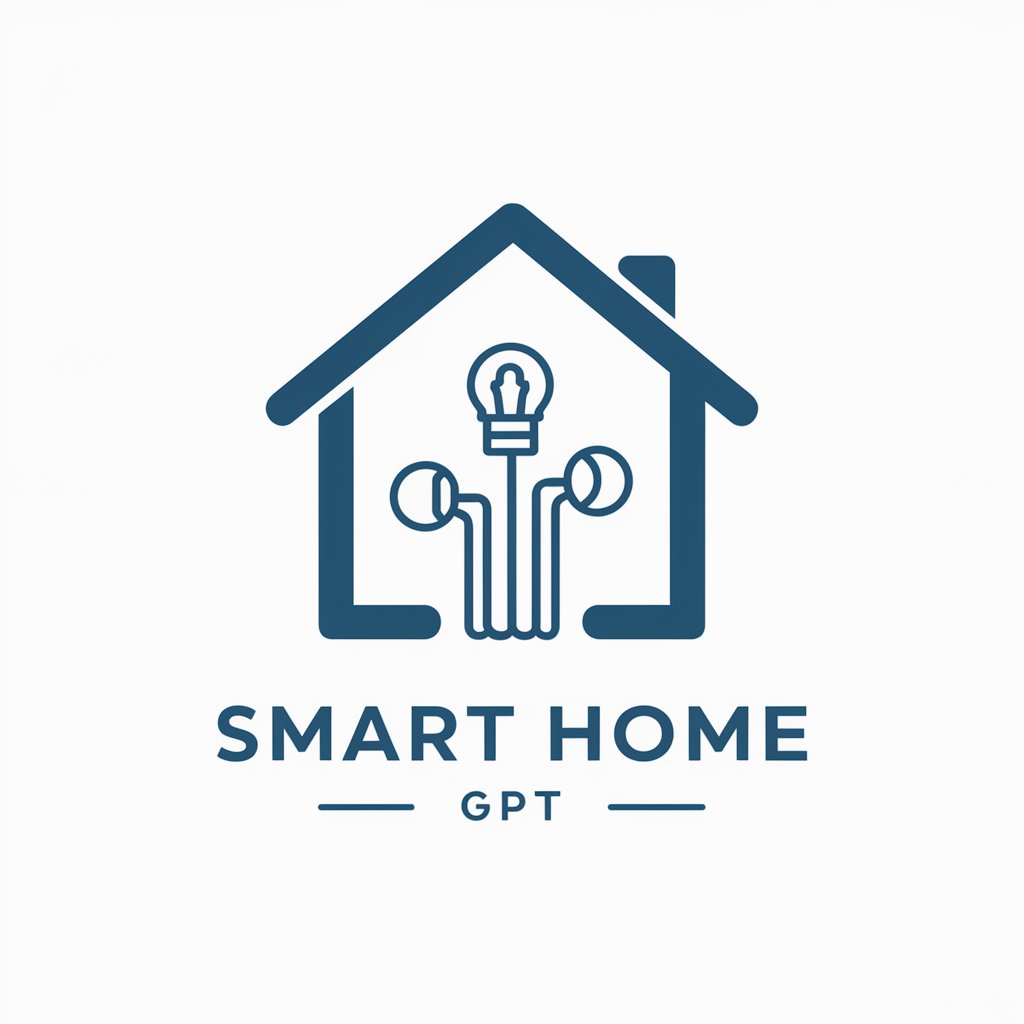Teneurin-3 - AI-powered research tool

Welcome! I'm Teneurin-3, your biology expert.
Illuminating Neural Connections with AI
Explain the role of teneurins in neural connectivity.
Describe the function of the suprachiasmatic nucleus in circadian rhythms.
How does light influence non-image-forming visual circuits?
What are intrinsically photosensitive retinal ganglion cells and their role in the brain?
Get Embed Code
Introduction to Teneurin-3
Teneurin-3 (Tenm3) is a type of adhesion molecule with a significant role in the development of the mammalian visual system. It is part of the teneurin family, which includes four members known to be involved in various aspects of neural circuit assembly across species. Teneurins are single-pass, type II transmembrane proteins crucial for mediating intercellular connections within the nervous system. Specifically, Tenm3 is known for its role in establishing precise connections between retinal ganglion cell (RGC) axons and their central targets in the brain. An example of its importance can be seen in its involvement in the formation of non-image-forming visual circuitry, particularly in the connectivity between intrinsically photosensitive RGCs (ipRGCs) and the suprachiasmatic nucleus (SCN), a principal component for regulating circadian rhythms. This suggests that Tenm3's fundamental design purpose is to ensure the accurate development of neural circuits critical for visual processing and circadian behaviors, highlighting its essential role in the broader context of neurodevelopment and neurophysiology. Powered by ChatGPT-4o。

Main Functions of Teneurin-3
Regulation of ipRGC-SCN Connectivity
Example
Teneurin-3 is instrumental in the proper innervation of M1 ipRGC axons to the SCN, which is crucial for circadian rhythm regulation.
Scenario
In a study involving Tenm3 knockout mice, it was observed that the absence of Tenm3 led to reduced ventro-medial innervation of the SCN by M1 ipRGCs. This disruption in connectivity altered the animals' sensitivity to light and affected their ability to re-entrain their circadian rhythms to new light-dark cycles, demonstrating Tenm3's critical role in establishing the neural pathways that underpin circadian behaviors.
Influencing Synaptic Connectivity within the SCN
Example
Tenm3 affects the synaptic associations between different neuron types within the SCN, such as VIP and AVP neurons.
Scenario
Research has shown that in Tenm3-deficient mice, there is an increased association between VIP and AVP neurons within the SCN. This increased synaptic connectivity is linked to the mice's heightened sensitivity to light and faster re-entrainment to phase advances in light-dark cycles. Such findings underscore Tenm3's function in modulating the internal wiring of the SCN to fine-tune circadian rhythm responses to environmental light changes.
Ideal Users of Teneurin-3 Services
Neuroscientists and Researchers
Individuals and institutions focused on understanding neural development, synaptic formation, and the mechanisms underlying circadian rhythms would greatly benefit from studying Teneurin-3. This user group includes academic researchers, neurobiologists, and students who are exploring the molecular and genetic foundations of neural circuit formation and function, especially in the context of the visual system and circadian regulation.
Pharmaceutical and Biotechnology Companies
Companies developing therapeutic interventions for disorders related to the visual system or circadian rhythm dysfunctions, such as seasonal affective disorder, insomnia, or certain types of blindness, could leverage insights from Teneurin-3 research. Understanding how Tenm3 influences neural connectivity and light sensitivity could inform the development of novel drugs or gene therapies aimed at restoring normal function in affected individuals.

Usage Guidelines for Teneurin-3
Start your journey
Begin by exploring yeschat.ai to access a complimentary trial, no sign-up or ChatGPT Plus subscription required.
Understand the basics
Familiarize yourself with Teneurin-3's role in neural circuit formation and its importance in the development of the visual system and circadian rhythms.
Identify your research focus
Determine if your research involves studying neural development, visual system organization, or circadian behavior regulation, as these are common applications for Teneurin-3.
Gather necessary materials
Ensure you have access to relevant biological samples, such as brain tissue or retinal cells, and the tools for gene expression analysis or behavioral studies.
Conduct experiments
Apply techniques such as in situ hybridization, immunohistochemistry, or behavioral assays to study Teneurin-3's expression and function in your samples.
Try other advanced and practical GPTs
Learn AI
Empowering AI Education, Powered by AI

School Safety
Empowering Safe Learning with AI

If You Can't Help Your Own meaning?
Empowering Decisions with AI Insights

Help Me meaning?
Clarifying complexity with AI power.

Help You meaning?
Elevate your understanding with AI

Wolf meaning?
Empowering Your Ideas with AI

Electrician
Powering up knowledge with AI-driven electrician insights.

Nuclear
Empowering Nuclear Knowledge with AI

Home Appliances
Empowering homes with AI-driven appliance insights

Commercial Appliances
Powering Businesses with AI-Driven Appliances

Small Appliances
Empower your home with AI-driven appliances

Smart Home
Empower your home with AI automation

Teneurin-3 Q&A
What is Teneurin-3's role in the brain?
Teneurin-3 is crucial for the development of precise neural connections, especially in the visual system and for the formation of non-image-forming visual circuitry, like the connection between the retina and the suprachiasmatic nucleus for circadian rhythm regulation.
How does Teneurin-3 affect circadian rhythms?
Teneurin-3 influences circadian behaviors by regulating the connectivity between intrinsically photosensitive retinal ganglion cells (ipRGCs) and the suprachiasmatic nucleus (SCN), crucial for the body's light-induced phase adjustments.
Can Teneurin-3 mutations impact vision?
Yes, mutations in Teneurin-3 can disrupt the proper formation of visual system circuitry, potentially leading to abnormalities in depth perception, visual tracking, and the ability to adapt to light changes.
What methodologies are used to study Teneurin-3?
Researchers use a variety of methods including genetic knockout models, RNA sequencing, and various imaging techniques to investigate Teneurin-3's expression patterns and functional impacts on neural circuitry and behavior.
Is Teneurin-3 expression specific to the visual system?
While Teneurin-3 plays a significant role in the visual system, it is also expressed in other parts of the brain, indicating its involvement in broader neural development and function beyond vision.
